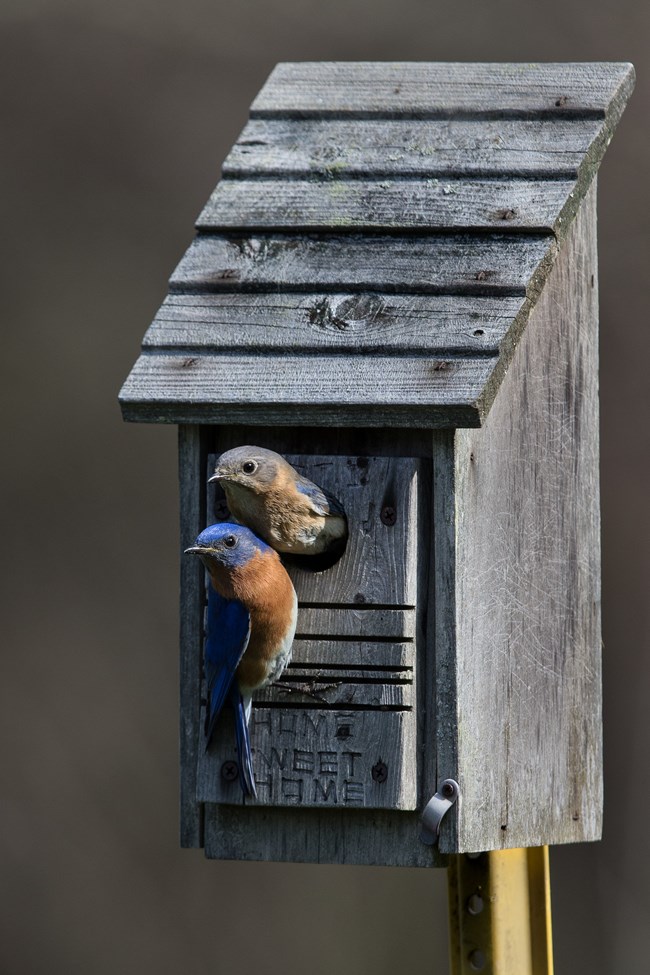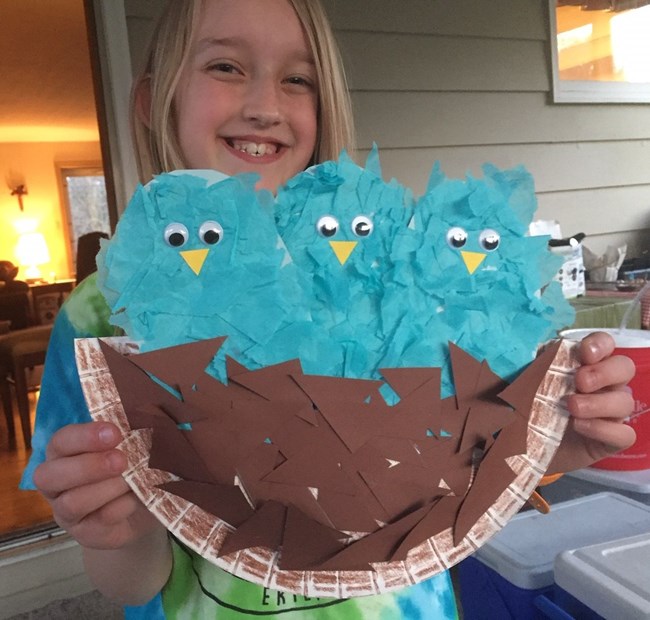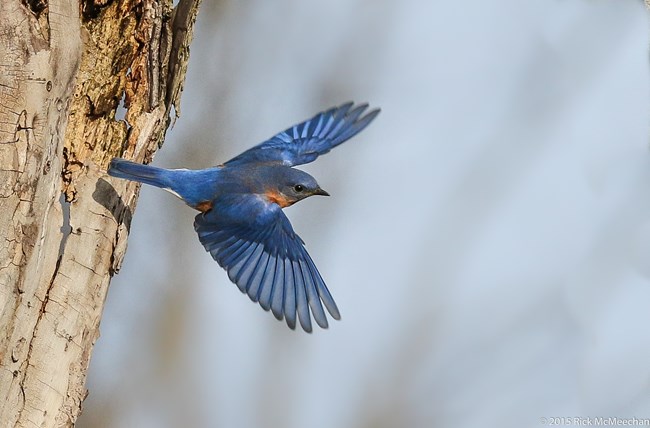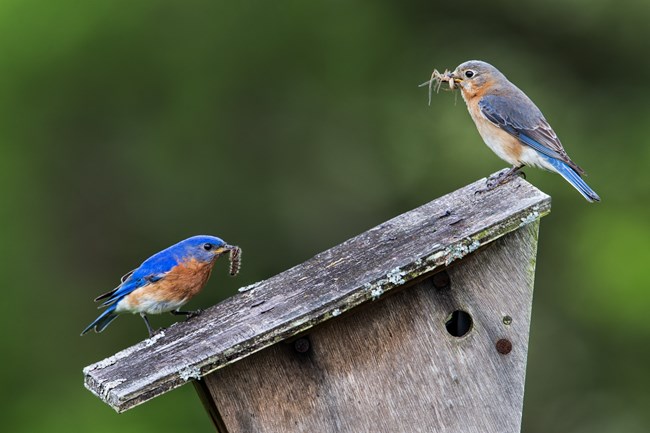Last updated: June 21, 2020
Article
Junior Ranger, Jr. Explores Bluebirds

© Jim Roetzel
Imagine
If you were a male Eastern bluebird, your head, back, wings, and tail would be a bright royal blue. Your breast would be rusty red and your belly white. You would bring your mate grasses, pine needles, and feathers. If you were a female, you would build a nest for your chicks. You would look similar to the male, but your colors would be paler and greyish.
If you were hungry, you would eat insects, wild fruit, and berries. You may even catch shrews, salamanders, snakes, and tree frogs! Your sharp, pointy beak can stab your food and protect your nest. If you wanted to talk with your friends, you would sit on a high perch and call, tru-ly!

NPS/Kerry Muhl
Make
Make your own baby bluebird nest.
Materials
- paper plate
- construction paper (brown, yellow, and blue)
- blue tissue paper
- googly eyes (medium or large)
- brown crayon or marker
- glue
- safety scissors
Directions
-
Cut a paper plate in half. Use one half to make the nest.
-
Color one side with a brown crayon or marker.
-
Cut three large ovals out of blue construction paper. These will be the chicks.
-
Tear the blue tissue paper into crumbled pieces.
-
Glue these to the ovals so the fluffy “feathers” sticking out in all directions.
-
Glue the ovals to the top of the nest, so the heads stick up and the bodies overlap side-to-side.
-
Tear the brown paper into pieces.
-
Glue these to the paper plate to complete the nest. Cover the bottom half of the chicks.
-
Cut out three small triangles of yellow paper.
-
Make the face of each baby bird by gluing on two googly eyes and a triangle beak.
-
Take a photo and send to our park’s Facebook page.

© Rick McMeechan
Look/Listen
Listen to the song of a male Eastern bluebird.
Listen to the call of a female Eastern bluebird.
Hear a conversation between a male and female Eastern bluebird.
Watch a video of a male Eastern bluebird singing.
Can you call like a bluebird? tru-ly!

© Rick McMeechan
Move
At snack time, pretend to be a mother bluebird feeding her baby. Have someone else in your family be the baby. The baby chirps loudly to say it is hungry. Pinch your fingers together to form a beak. Use your beak to pick up small snack and carefully pop them into the baby’s open mouth. Next, count how many colors you see on the Eastern bluebird. Search your home for things that are each color.
Find
During the spring and summer, take a short trip around your neighborhood by foot, bike, or car. Look for birds perching on telephone wires and poles along the roadsides. If you see a bright blue bird with a rusty breast and white belly, it is a bluebird.

© Jim Roetzel
Learn More
The Cornell Lab of Ornithology has put together a wonderful collection of bird sounds, photos and other information. Click to learn more about the Eastern bluebird. If you are interested in helping these threatened birds, Audubon has advice and plans for bluebird nestboxes.
